![]()
|
Elsmore & Forster
|
Location and period of operation:
|
Elsmore & Forster (& Co) |
Tunstall |
1853 |
1871 |
Earthenware and Parian manufacturers at the Clayhills Pottery, Tunstall, Stoke-on-Trent, England
|
Subsequently Elsmore and Son
Selected
by the Committee for the Staffordshire Potteries
to exhibit at the Paris Universal Exhibition of 1855

London Gazette, 2 February 1855
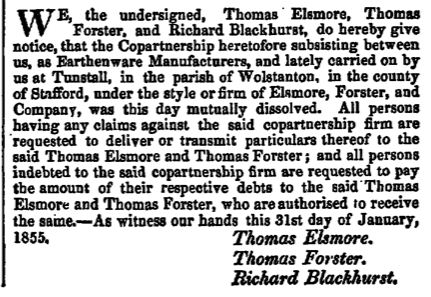
notice of the
dissolution of the earlier partnership of
Elsmore, Forster & Blackhurst
|
It has the victor's laurel wreath with a single star at top on two sides Pattern was conceived with the American public in mind during the post Civil War period. |
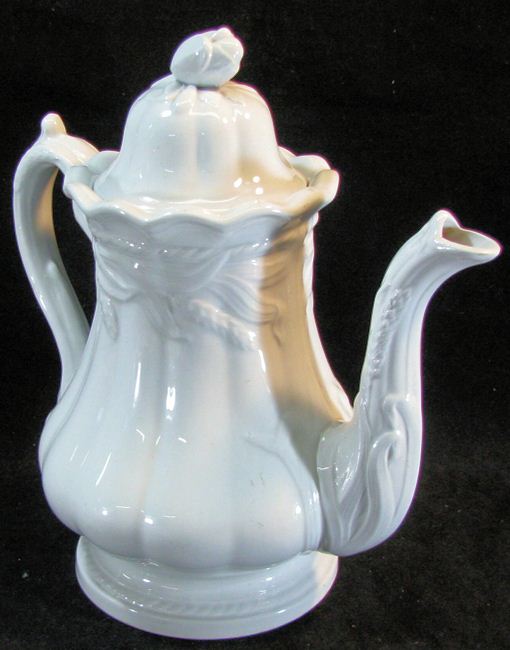 white ironstone teapot in the Ceres shape Ceres (one of the most collected wheat
patterns), was named after the Roman goddess of
agriculture. |
Printed mark using the the Royal Arms Applied mark showing the registration diamond for 2 November 1859 |
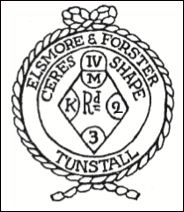
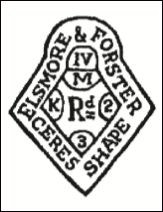
marks used on the Ceres shape
ware
the round mark has the town name
TUNSTALL (where the factory was located)
and incorporates the Stafford
Knot
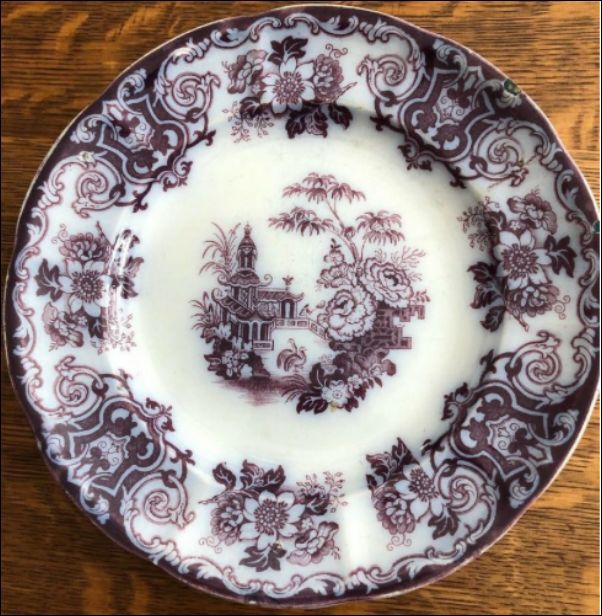 mulberry purple transferware plate in the SIMLA pattern |
impressed and printed mark marks with "& Co" are likely to be 1853-5 |
|
The SIMLA pattern appears to have originally been produced by Thomas Walker who operated in Tunstall between 1845 and 1851. An auction of Thomas Walker’s equipment and engraved copper plates was held in September 1853 and it is probable that plates for the SIMLA pattern were acquired by Elsmore & Forster. |
Marks used on ware for identification:
ELSMORE FORSTER & Co
marks with "& Co" are likely to be 1853-5
ELSMORE & FORSTER
ELSMORE & FORSTER
TUNSTALL
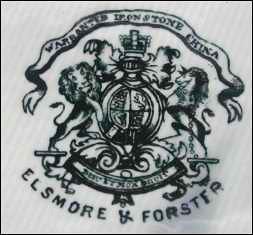 Warranted Ironstone China Elsmore & Forster |
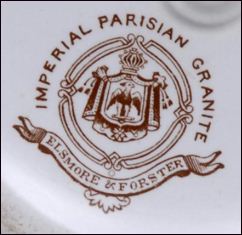 Imperial Parisian Granite Elsmore & Forster |
typical printed marks
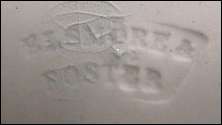 Elsmore & Foster impressed mark
|
 Elsmore & Foster Tunstall impressed mark
|
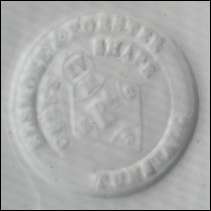 Elsmore & Foster Tunstall Ceres Shape applied mark with registration diamond applied marks were made using a coin-like pad of clay which was impressed with the design and attached to the bottom of a piece with very liquid clay called slip |
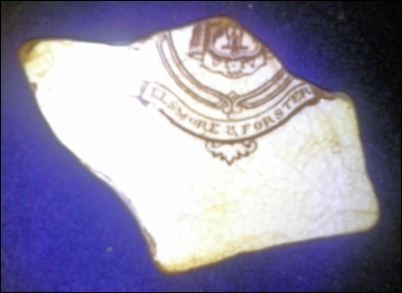
fragment of pottery with the
Elsmore & Forster mark found
at the beach at The Rockways - New York City
Elsmore & Forster
presentation and puzzle jugs
| Elsmore & Forster
specialised in this type of jug and produced a number of variations of
them, all decorated with engraved images relating to popular
entertainment - they seem to have acquired a stock of old prints which
they printed in different combinations on various-sized jugs. Generally very highly decorated with hand-coloured lustre-glazed transfer prints, on a cream ground. The circus theme jugs had theatrical engravings including the clown Joe Cashmore and Grimaldi, other clown images, Pantomime characters, Harlequins and chap-book prints of native & zoo animals, and other whimsies. These puzzle jugs and related barware accessories were wildly popular in pubs and gambling establishments. This puzzle jug has a hole in the handle connected through an inner tube to a hole in the bottom. The unsuspecting drinker who picks up the jug without blocking the hold in the handle will be surprised when the ale pours out of the bottom! Many of the presentation jugs included various cock fighting scenes and these jugs were often used as presentation jugs, presumably to the owner of the winning cock. NOTE: Manufacture of presentation jugs was continued by the successor company - Elsmore & Son - it would appear that ware manufactured by them didn't have a makers mark. NOTE: The same jugs were made by
Joseph Goodwin. The
operating period for Joseph Goodwin and Elsmore & Forster
overlapped. |
 "The Great Cashmore - Everybodys Clown" |
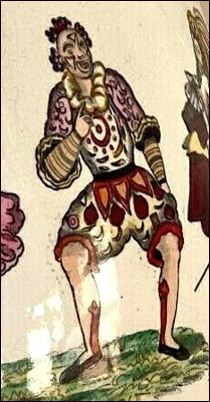 Joseph Grimaldi as Joey the Clown |
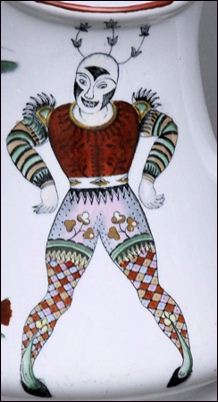 this figure seems to be a composite of a number of clowns |
| Joe Cashmore... According to John Turner’s biographical dictionary of British circus performers, Joe’s father was a clown named Ike Cashmore and his mother, billed as Madame Cashmore, was a noted tight-rope performer and equestrian. His full name was Joseph Henry Cashmore, and advertisements printed in The Era (a contemporary trade journal for entertainers) listed his skills as: "Comic Knockabout Clown, High Stilts, Juggler, Running Globe, Vaulter, &c." |
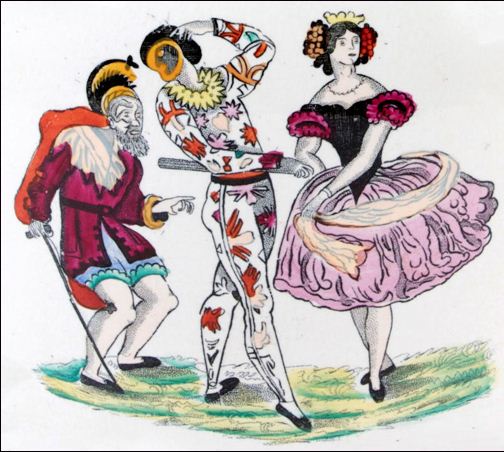
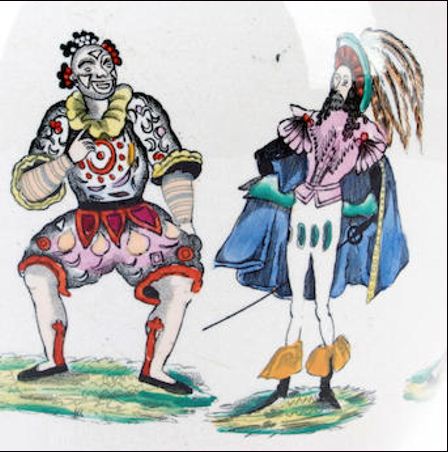
Italian comedy (Commedia
dell'arte) figures
| many of the jugs show five Commedia dell'arte style characters (left to right) Pulcinella (from which Mr Punch was derived) Harlequin, Columbina, Grimaldi (as Joey the Clown) and Il Capitano |
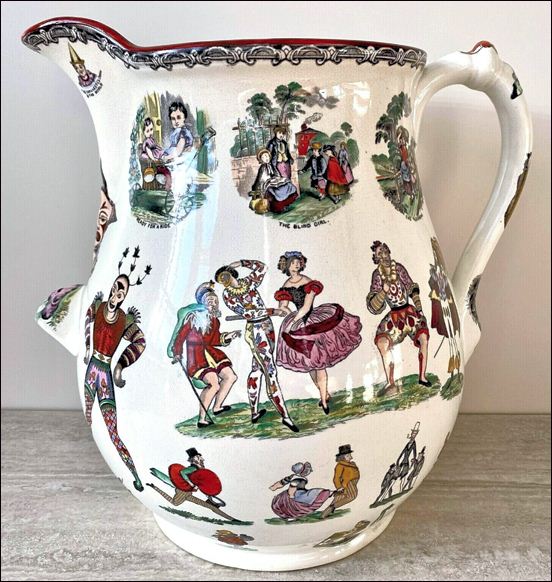
|
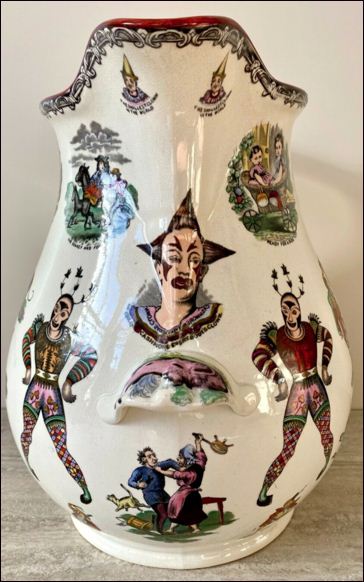
|
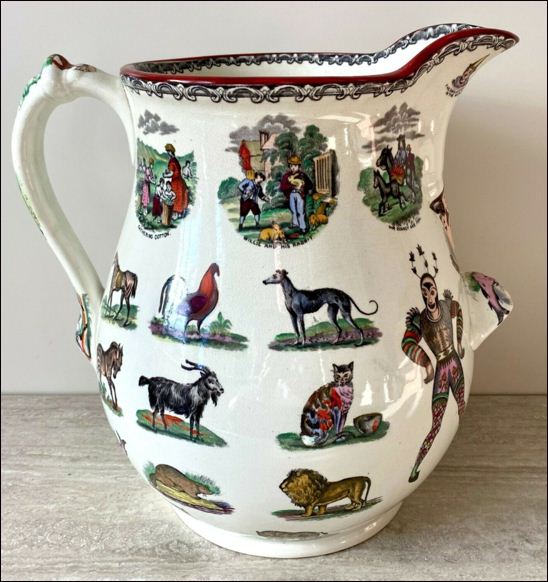 |
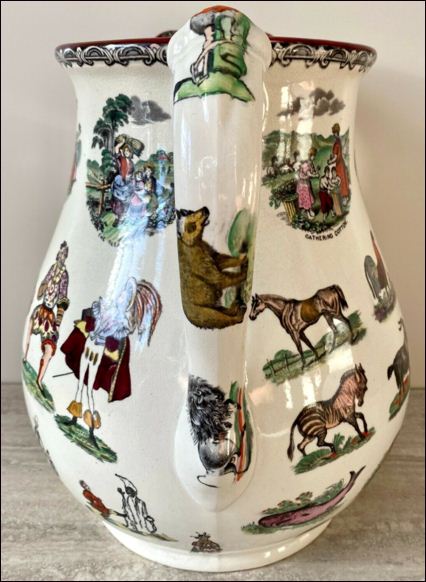
|
|
Large bar-ware jug by Elsmore & Forster or Elsmore & Son This large jug has a hand grip under the spout to enable it to be steadied when pouring. There is an impressed 21 on the base but no makers mark. |
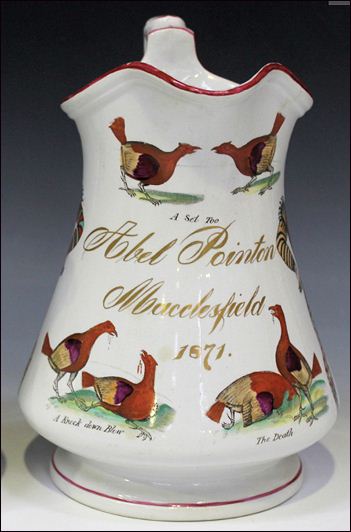 Elsmore & Forster presentation jug 'Abel Pointon Macclesfield 1871' this jug has no makers mark |
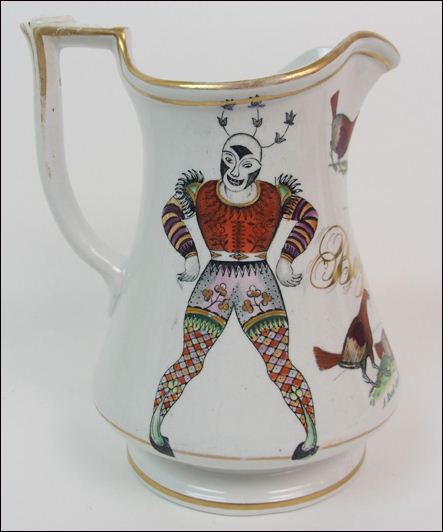 puzzle jug - 'Boys Drink' this jug has the Elsmore & Foster mark shown on the right |
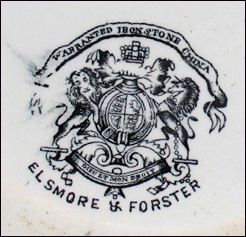 Warranted Ironstone China Elsmore & Foster mark on the 'Boy's Drink' puzzle jug - incorporating the Royal Arms |
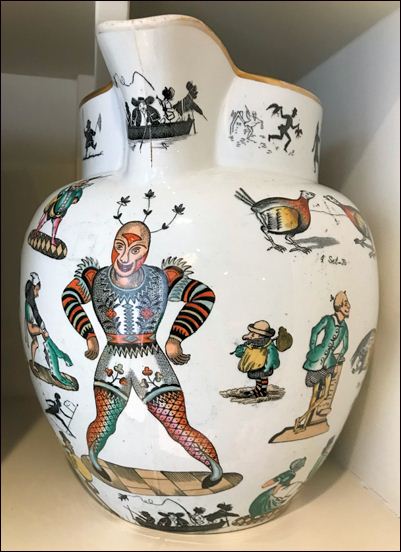
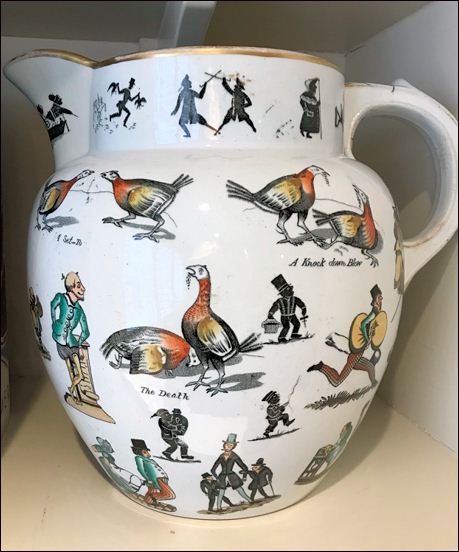
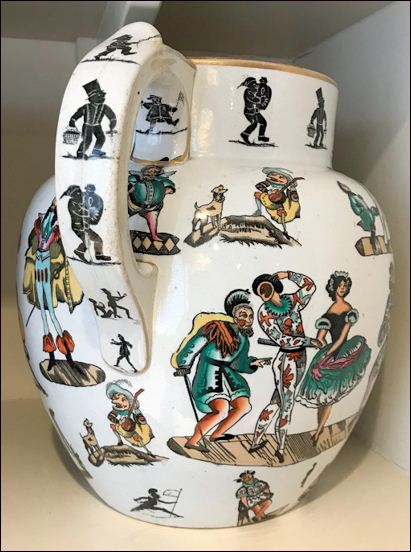
example with Italian comedy
style figures, cock fighting scenes, various chap-book characters and wimsical
shadow figures
photos courtesy: Bea Boulton
Questions, comments, contributions? email: Steve Birks